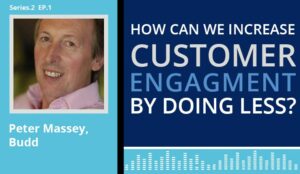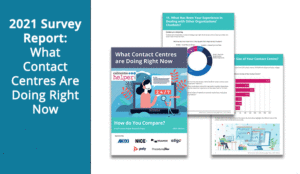Derek Adams of Genesys shares a story that may be a little too familiar, which he calls “The Quick Fix of Doom”.
Just as each business is like a living being with different business aptitudes and technical capabilities, it also can become scarred by unfortunate circumstances. Poorly made critical decisions can have devastating effects on company culture.
We’ve all seen it: A business gains a weak core competency as the result of bad choices and damaged relationships. That’s the subject of this next scenario. What is your relationship like with your customer experience vendor?
Not all stories end well, unfortunately. But to gain value from sharing success stories, it’s important to remember what’s at stake. We’ve seen this next situation more times than we care to admit. I call this story: “The Quick Fix of Doom”.
Chapter 1. A Problem Is Clear
The hero of this story is a business who knows there’s a problem. The feedback from customers and analysts is overwhelming—the experiences that they provide to their customers are disjointed and frustrating.
People who try to connect with them suffer the traditional indignities of long hold times, having to repeat account information and dealing with multiple transfers that sometimes end up with an agent who seems to be on a never-ending break.
The business also put no thought into leveraging a customer experience platform to achieve sales and marketing outcomes. So, despite their glistening innovative product, they’re limited in their ability to get it to new customers.
They begin to lose business, which darkens their balance sheets. And prompts stakeholders to start asking tough questions.
In seeing an opportunity to enact profitable change, our hero promises a solution by the end of the year and gets to work researching options.
Chapter 2. The Temptation of the Quick Fix
Company executives just want this pesky problem to go away; they don’t see the wisdom of diverting too much money away from research and development, considering their aggressive roadmap and all.
So, our hero expands capabilities by buying something cheap and fast to deploy from a small vendor with limited experience.
This technology doesn’t integrate well with the current customer experience platform, but the professional services team patches something together. It’s not ideal, but the vision for what they hope to achieve is narrow and short-sighted.
The result is underdeveloped goals, but at least the quick-fix solution can achieve them. So, no one doubts the wisdom of this decision.
Within a very short time after deployment, their promised business outcomes start rolling in. The stakeholders are happy; high fives and fist bumps are exchanged. The problem is solved.
Chapter 3. The Game Is Changed and a Weakness Is Exposed
In a short time, though, the adhesive on the bandage begins wearing off. Customer satisfaction scores begin to drop again. New competitors have arrived and differentiated themselves with omnichannel customer experiences.
Public attitudes evolve to accept this new experience as standard, and our hero begins losing accounts to these upstarts.
The bar has been raised, but the hero can’t rise to the challenge because of the limitations of the patchworked solution. Again, the stakeholders demand a response. And again, the hero promises one.
Chapter 4. Things Spiral out of Control
The vendor of the quick-fix solution isn’t equipped to help with this problem, so the hero buys an add-on from yet another vendor to stitch onto their current platform. This new fix costs far more than they want to spend, but their options for compatibility are limited. They feel forced to perpetuate the problem that got them there.
It takes several months to get this new solution deployed—all while their brand continues to suffer. When it’s live, the connection between the three disparate technologies isn’t seamless, and it shows. The public is unimpressed. The stakeholders are furious. Money is wasted. Fingers are pointed. And relationships are ruined.
Chapter 5. The Damage Is Done
Our hero is now between a rock and hard place. Inferior customer experience is hurting company margins. And it gets worse each day, as this defect becomes an inseparable part of their brand image.
But replacing everything doesn’t feel like a great option to them either. Not only would they lose everything they’ve invested so far, but they’d have to admit failure. And that isn’t acceptable to every business.
They suffer the fate of all tragic figures—not only did they not reach their goals long term, but they did heavy damage to their company culture.
The resulting mess might not be recoverable, and it can drive more poor decisions that create even more damage.
Author: Robyn Coppell
Published On: 13th May 2019 - Last modified: 14th May 2019
Read more about - Guest Blogs, Genesys









































